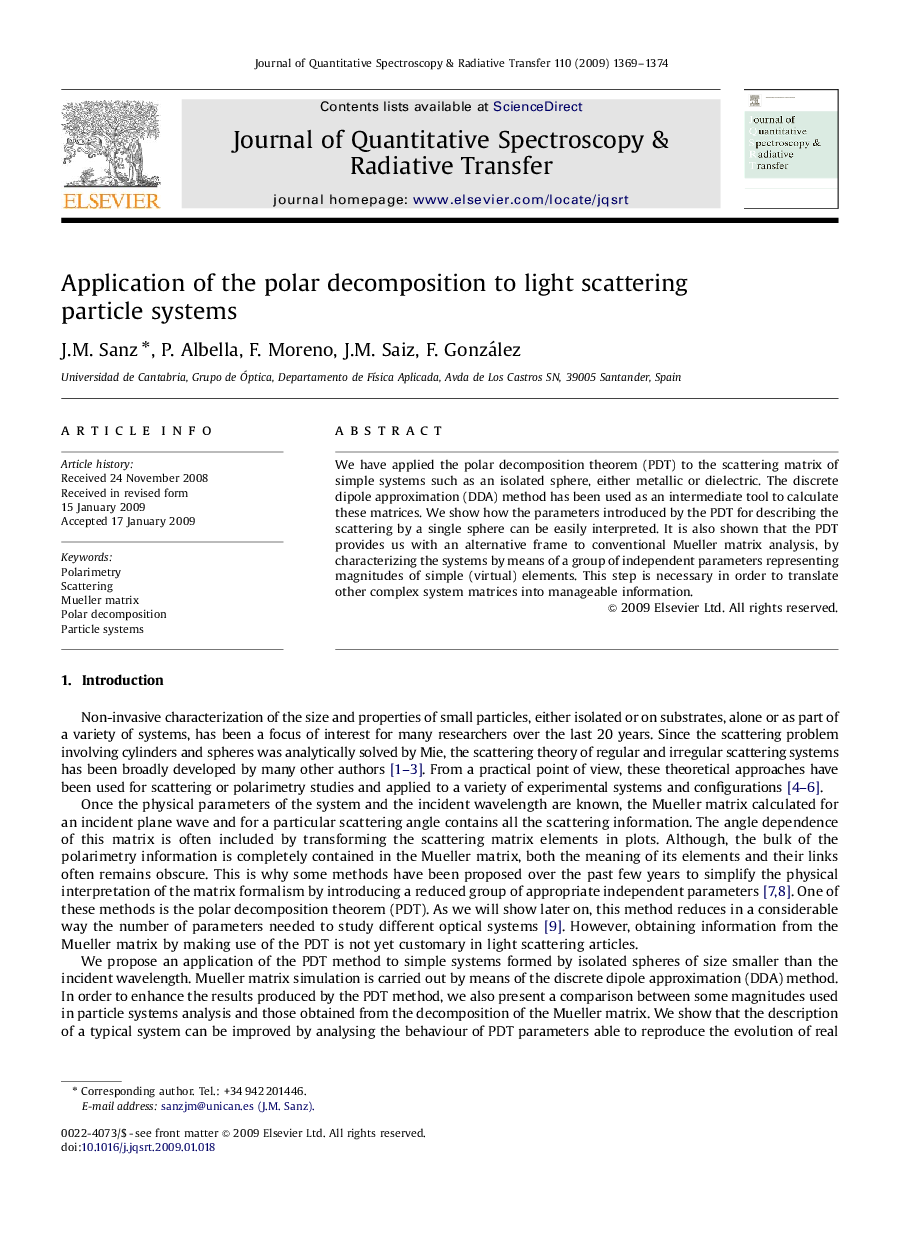| Article ID | Journal | Published Year | Pages | File Type |
|---|---|---|---|---|
| 5430108 | Journal of Quantitative Spectroscopy and Radiative Transfer | 2009 | 6 Pages |
Abstract
We have applied the polar decomposition theorem (PDT) to the scattering matrix of simple systems such as an isolated sphere, either metallic or dielectric. The discrete dipole approximation (DDA) method has been used as an intermediate tool to calculate these matrices. We show how the parameters introduced by the PDT for describing the scattering by a single sphere can be easily interpreted. It is also shown that the PDT provides us with an alternative frame to conventional Mueller matrix analysis, by characterizing the systems by means of a group of independent parameters representing magnitudes of simple (virtual) elements. This step is necessary in order to translate other complex system matrices into manageable information.
Related Topics
Physical Sciences and Engineering
Chemistry
Spectroscopy
Authors
J.M. Sanz, P. Albella, F. Moreno, J.M. Saiz, F. González,
